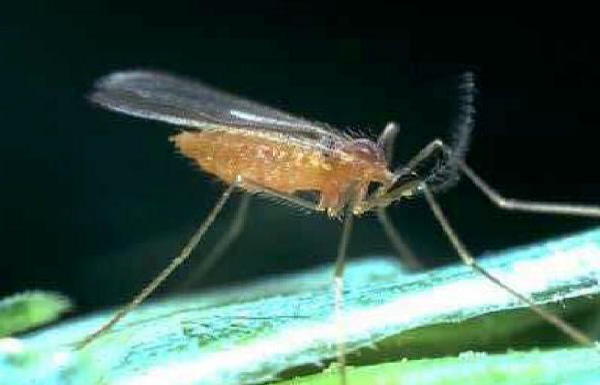Orange blossom midge
This pest can cause a great deal of damage to the developing grain during ear emergence. It is present in Scotland but we have seldom seen it at levels that will damage Scottish winter wheat crops. The orange midges usually appear in second or third winter wheat crops once the mean daily air temperatures exceed 15ºC and conditions are still and dry. The small orange midges lay eggs on the ears from early ear emergence onwards (GS51-59), and after hatching the larvae feed on the developing grain, resulting in poor yield and reduced quality of grain. The best time to look for midges is on warm, still evenings by standing in the crop and looking for the midges resting or flying around the ears of the crop.
For feed wheat crops, 1 or more midges per 3 ears are enough to justify an insecticide treatment. For milling wheat crops, 1 or more midges per 6 ears is enough to justify an insecticide treatment. There are also pheromone traps available to monitor for the presence of midges within crops.

Related information
Sign up to the FAS newsletter
Receive updates on news, events and publications from Scotland’s Farm Advisory Service
